Embark On To Gurudwara Manikaran Sahib A Sacred Journey To The Heart Of Himachal In 2025]
![Embark On To Gurudwara Manikaran Sahib A Sacred Journey To The Heart Of Himachal In 2025]](https://img.traveltriangle.com/blog/wp-content/uploads/2024/11/Gurudwara-Manikaran-Sahib.jpg)
The Gurudwara Manikaran Sahib is located in the beautiful Parvati Valley. Its history is, however, tremendously crucial to Sikhs and Hindus alike. This sacred place is emerging as a centre of attraction for tourists and pilgrim traffic from around the world. Due to its history, religious associations, and peculiarities of the geographic landscape, it is a calm union of faith, folklore, and nature. It has its history, religious feel, and natural manifestation in Hindu culture.
About Gurudwara Manikaran Sahib
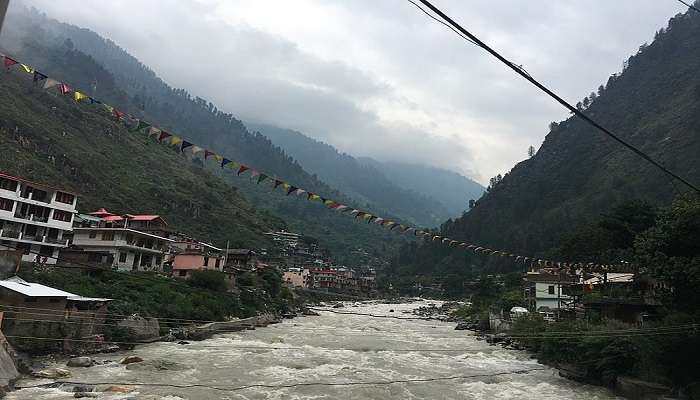
It is an ancient shrine linked with Guru Nanak Dev Ji, who was consequently known as the founder of Sikhism. According to the Sikh belief system, Guru Nanak Dev Ji made the pilgrimage to Manikaran with Bhai Mardana in the early sixteenth century. The story goes that at some point, Bhai Mardana got hungry, and there was nothing to eat there.
Then Guru Nanak Dev Ji directed him to go to the hot springs nearby to get cooked food. But Bhai Mardana was careless in the kitchen; he boiled the chapatis in hot water, and the chapatis sank to the bottom. Alone and frustrated, he returned to Guru Nanak when he later instructed him to pray to God. By some miracle, the chapatis came out fully cooked again. Therefore, this tradition is now observed as the Langar (community kitchen), symbolising Sikhism’s ideology of sewa or service to others and equality.
Also Read: Best Places To Visit In Himachal Pradesh
Gurudwara Manikaran Sahib Architecture And Design

Even the construction layout of Gurudwara Manikaran Sahib, particularly in the area, gives much information about the bond between Sikhs and Hindus by demonstrating the perfect interweaving of both religions at the site. The multistoried Gurudwara has an excellent view of the surrounding beautiful mountains. A white façade features ten gilded domes visible when it is bathed in sunlight.
In the premises of this Gurudwara, Darbar Sahib is the focal arena, a prospective divine centre for reverence. The walls and roofs have carving work on them with crests and images; the room resonates with the music of Gurbani. To the side of the gurudwara is a natural hot spring, which is said to have curative properties. The hot spring water is used to wash the pilgrim’s body and soul and treat diseases, according to their belief.
The Hot Springs Of Manikaran
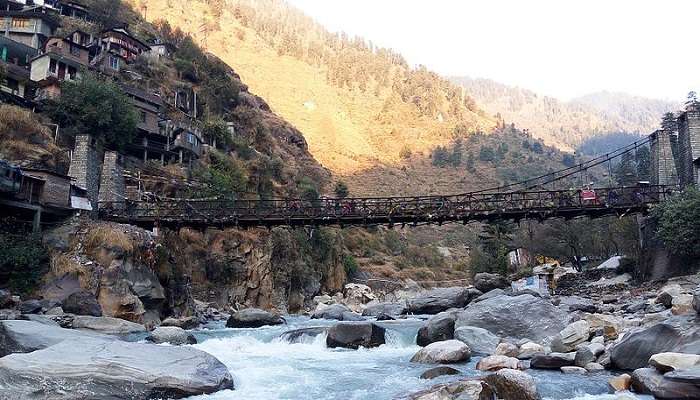
According to Hindu myths and legends, the hot springs are related to Lord Shiva and Goddess Parvati. There is a local belief that during the Goddess’s stay in Manikaran, she dropped one of her Ornaments—the Mani. This is because when Lord Shiva searched for it, the seas boiled, thus leading to the formation of hot springs.
Two hot springs at Manikaran boil most of the time, with water temperatures touching the boiling point. Muslin cloth was once used in these springs to prepare rice and other offerings, which the pilgrims prepared. This is a well-known practice that dates back centuries. The water is considered to have healing powers, and most people use it for baths in the available recreational sections due to its effectiveness in treating different diseases.
Related Post: Waterfalls In Himachal Pradesh
Nearby Attractions Of Gurudwara Manikaran Sahib
Gurudwara Manikaran Sahib is surrounded by several attractions that enhance the overall experience of visiting this spiritual haven. Some notable places to explore in the vicinity are described further in this blog:
1. Kasol
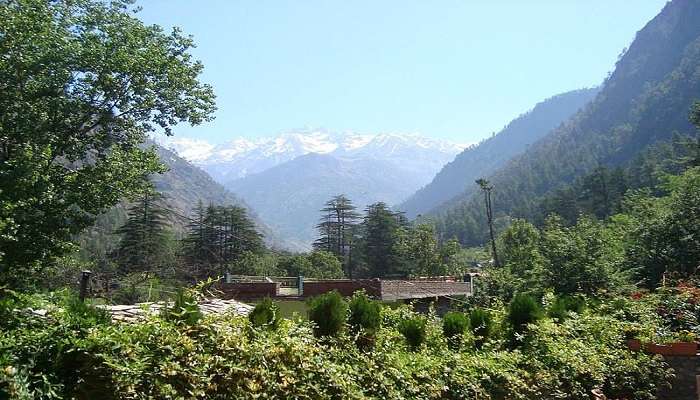
Kasol is a small village famous for its scenic beauty and lively culture. It is an ideal place for tourists, adventurers, and lovers of natural beauty. Several activities can be engaged in throughout the village, such as walking around the town by the Parvati River, hiking, rock climbing, and mountaineering, among others, in the mountains surrounding the city.
Kasol is a village that lies in the clouds. One can start the day with mushroom thukpas and end the day with the taste of apple tea. There are several cafes, camps, etc., one may come across while drifting along the water of the pious Parvati River. Kasol is an excellent place and is especially famous for trekking trails. Some frequently-explored treks are Gahan, Sar Pass, and Bhandak. But choose what interests you, what you are good at, and what you have spare time to spend on the task.
Entry Fee: Free
Best Time to Visit: May to August
Location: Located in the Parvati Valley of Himachal Pradesh, India
Distance from Gurudwara Manikaran Sahib: Approximately 4 kilometres from Gurudwara Manikaran Sahib
2. Parvati River
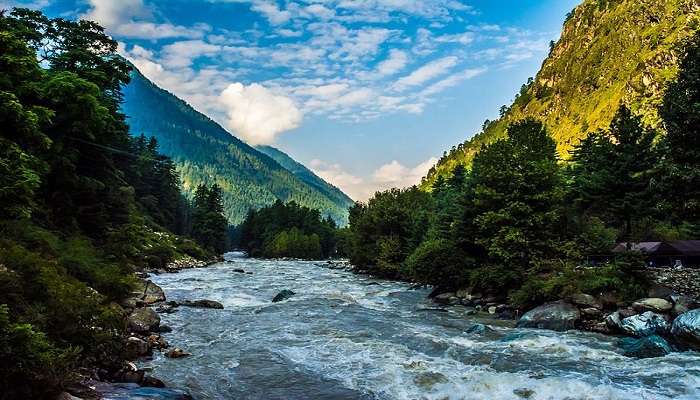
Parvati River is a natural beauty gushing through the valley of Parvati, which provides space for tourists and a peaceful time to sit and ponder. The river’s water is clear, and the surrounding beauty is breathtaking, which attracts devotees to meditation and photography and makes the spirituality of Manikaran more prominent.
The magnificent sound of the river beautifies the region and provides the spirit of transcendence. The area is ideal for photographers, nature lovers, and ardent nature admirers. If you are searching for a place to worship or want to enjoy the Beauty of Nature, the Parvati River compliments the calm and pious ambience of Manikaran.
Entry Fee: Free
Timing: Open 24 hours
Location: Flows alongside Manikaran
Distance from Gurudwara Manikaran Sahib: 0 km (adjacent to the Gurudwara)
Related Post: Homestays In Himachal Pradesh
3. Tosh
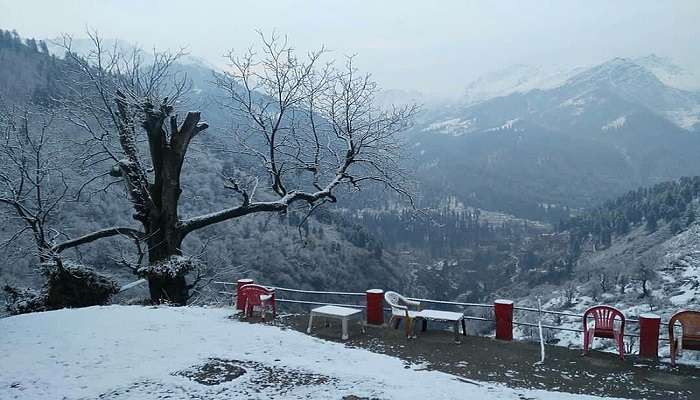
Tosh is one of the most beautiful small villages at the Parvati Valley’s end. This lovely place exposes one of the most marvellous and serene scenes. This place is well known among trekking tourists, and they admire the beauty of nature-loving people.
The village’s culture is profound, with the local people staying in traditional wooden houses and breathtaking natural views of the snowy Himalayas. If you long to get out of this hustling, bustling life, Tosh will give you the complete feel to help you attain calmness and serenity.
Entry Fee: Free
Best Time to Visit: May to August
Location: Parvati Valley, Himachal Pradesh
Distance from Gurudwara Manikaran Sahib: 21 km
4. Malana

Malana is a place known for its distinct culture and ancient civilization. Malana is known for its mystery and historical importance among the present generation. It is worth explaining that the villagers regard themselves as the heirs of Alexander the Great’s army and follow particular customs and laws different from those of the rest of the country.
The village has its own specific rules and stays unperturbed primarily from the outer world. A tour of the area is a chance to meet people who, most likely, have not changed their manners for hundreds of years. Being a small and closed-off village that governs itself helps the village create intrigue for those interested in the culture.
Entry Fee: Free
Best Time to Visit: May to August
Location: Parvati Valley, Himachal Pradesh, India
Distance from Gurudwara Manikaran Sahib: Approximately 21 kilometres
Related Post: Best Places To Visit In Himachal Pradesh In December
5. Kullu And Manali

Himachal Pradesh is rich in tourist destinations; Kullu and Manali are among the hill stations most visited. They are famous for the natural beauty and historical significance of their areas.
Tour places include temple markets and tourist activities like trekking, paragliding, river rafting, etc. The road from Manikaran Kullu to Manali provides some of the most beautiful landscapes and scenery one can imagine, with valleys, rivers and lofty mountains.
Entry Fee: Free
Best Time to Visit: May to August
Location: Himachal Pradesh, India
Distance from Gurudwara Manikaran Sahib: Approximately 40 kilometres to Kullu and 85 kilometres to Manali.
You May Also Like To Read: Travel Tips For Himachal Pradesh
Gurudwara Manikaran Sahib is more than just a house of worship; Gurudwara Manikaran Sahib is a place of faith, culture, and scenic beauty. It is a special place because of the peaceful Himalayan scenery, the healing hot springs, the fantastic architecture, and the peaceful coexistence of Sikh and Hindu traditions. The experience at Gurudwara Manikaran Sahib is profound and enriching. So what are you waiting for? Plan your trip to Himachal Pradesh today and immerse yourself in prayer and reflection, finding inner peace and a deep connection to the spiritual essence of Manikaran Sahib.
For our editorial codes of conduct and copyright disclaimer, please click here.
Cover Image Credit: John Hill For Wikimedia Commons
Frequently Asked Questions About Gurudwara Manikaran Sahib
Why is Manikaran Sahib Gurudwara famous?
Manikaran Sahib Gurudwara is famous for being a Sikh pilgrimage site, believed to be visited by Guru Nanak Dev Ji, the founder of Sikhism. It's also known for its natural hot springs and beautiful location in the Parvati Valley.
Why is Manikaran water so hot?
The hot water springs in Manikaran are naturally heated due to the presence of radioactive elements like uranium.
What is Manikaran famous for?
Manikaran is popular for its religious significance for Sikhs and Hindus, with the gurdwara and a temple dedicated to Lord Shiva. It's also known for the hot springs and scenic beauty.
What is the myth of Manikaran Sahib?
One myth associated with Manikaran Sahib is that Guru Nanak Dev Ji dropped a roti (flatbread) in the boiling hot spring, and it cooked instantly. He then explained the importance of sharing and started langar, the community kitchen tradition in Sikhism.
Can I stay free in Manikaran Gurudwara?
Yes, like most Gurudwaras, Manikaran Sahib Gurudwara likely offers free Langar food and basic accommodation for pilgrims.
People Also Read:
Gurudwara Singh Sabha Gurudwara Bangla Sahib Gurudwara Data Bandi Chhor Sahib

Unveil the hidden treasures of the globe and turn every travel dream into reality. As a Content Writer, I am passionate enough to craft stories from ancient wonders to modern marvels. My words paint the picture-perfect itinerary for unforgettable experiences. Let my words be your trusted guide to immerse in the diverse culture and discover the beauty of the unknown.











